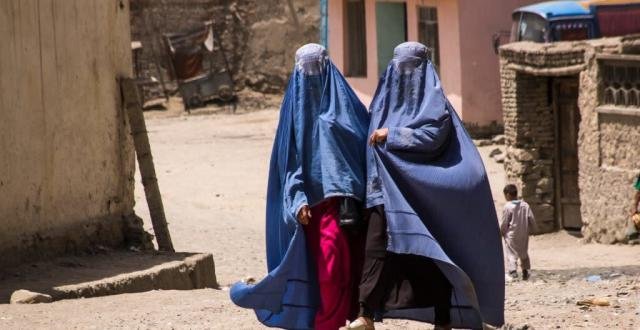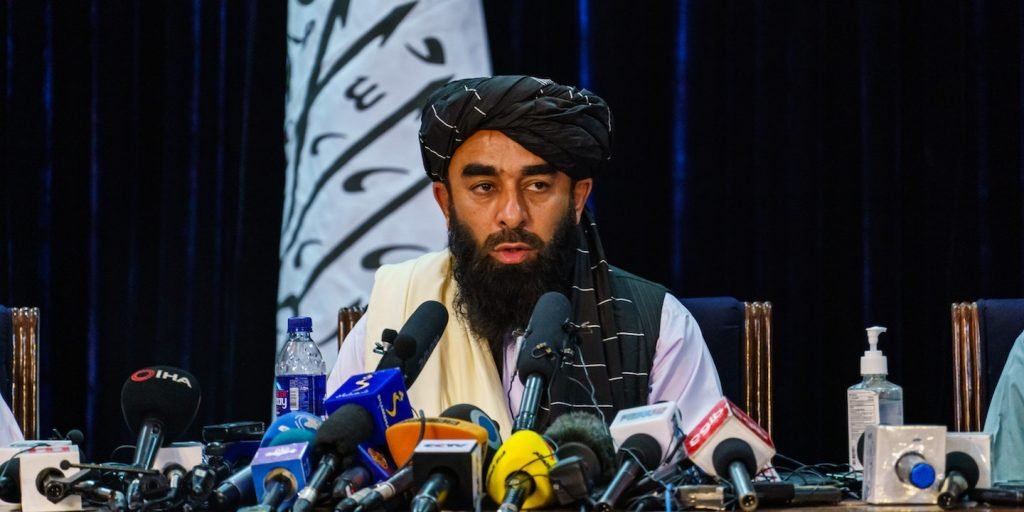While the Taliban is hawking over Afghanistan, the politically unstable country is growing worrisome about its female residents. When the Taliban last ruled Afghanistan between 1996 and 2001, they closed girls’ schools and banned women from working. Beating and shooting women in public places became a dime-a-dozen. The return of the Taliban is a blast from the past for the Afghan girl folk and womenfolk. Will the future of Afghan women be a dead letter in the Taliban regime, this time? Have a glance through the lives of Afghan women in the past, present, and future.
USSR-TALIBAN-USA: TIMELINE OF THE TRIPARTITE STRUGGLE
The land that is now Afghanistan has a long history of domination by foreign conquerors and strife among internally warring factions. The infamous three have been the Union of Soviet Socialists Republic (USSR), the Taliban, and the USA.
Early 1973 – A pro-Soviet government in Afghanistan under PM Gen. Mohammed Daoud Khan gave more public presence to the women.
1978 – When General Daud is overthrown and killed, the People’s Democratic Party of Afghanistan (PDPA) comes to power but is paralyzed by violent infighting and faces opposition by US-backed mujahideen groups. They rather than trying to bring about long-term, substantive programs to empower women, had implemented superficial gestures such as promoting women entertainers.
March 1979 – At the same time that the PDPA was mobilizing, mujahideen factions were forming in resistance to the communist political expansion, with Islam as their choice of political ideology. When they took over the area, the mujahideen opposed formal education. Women were targeted.
SOVIET INTERVENTION
December 1979 – Soviet Army invades and props up communist government. The invasion was seen as a threat to the security of oil-rich countries. In reflex, the then US President Carter opposed the Soviet Invasion and solidified U.S. support for the Afghan mujahideen. The US steps in. Much like the PDPA, the mujahideen at this time were using Afghan women as a political tool. The kidnapping of women became common. Above all, the mujahideen fighters used the vulnerability of Afghan women to sell their vision of Afghanistan to the broader population, promising that they would ensure the safety of Afghans and their women.
Successive years – Female mortality rates rose in rural Afghanistan pertaining to lack of adequate medical equipment.
1984 – Pakistan receives an influx of 6 million Afghan refugees. Because of inadequate funds, boys were forced to learn religious teaching in madrasa. Misleading them gave rise to the Taliban. Afghan refugee women have no access to bathrooms, schools, and hospitals.
1991 – USSR’s disintegration leads to its withdrawal from Afghanistan.
1992 – President Dr. Najibullah is publicly assassinated and the mujahideen took over central power in Kabul, the US too abandoned Afghanistan. The status of Afghan women went from bad to worse. Mujahideens made the hijab mandatory. Though women could continue attending school, female news reporters were barred from being visually represented on television. The screen showed only the picture of a rose, as the women would read the daily news. Later on, female reporters were banned from reading the news altogether.
TALIBAN RISES
1994 – Taliban rises. Revokes women’s rights. Education and working were both denied to women. Afghan women were ordered to wear the blue burqas ensuring no part of their body was visible. The sound of footsteps or shoes making a part of the foot visible meant beating.
1998 – With the drug trade flourishing and terrorists rising, Afghanistan had become the biggest prison in the world for women and girls.
US TROOPS ENTER AFGHANISTAN
2001 – 9/11 takes place making the US re-enter Afghanistan and strike a fight with mujahideen. This invasion eased the restrictions on women. And even as the war raged, a local commitment to improving women’s rights, supported by international groups and donors, led to the creation of new legal protections.

Fast-forward to 2015 – Obama abandons the idea of withdrawing US troops from Afghan soil by the end of his presidency and maintains 5,500 troops in Afghanistan when he leaves office in 2017. Afghan women seem to pursue education, work as well as sports, all this while.
2019 – Finally, the Trump-led US and Taliban sign an agreement on a peace deal that would serve as the preliminary terms for the U.S. withdrawal from the country by May 2021. But later, calls it off after the Taliban kills a U.S. soldier.
April 2021 – President Joe Biden announces his aim to complete U.S. troop withdrawal by 9/11.
July 5, 2021 – Later, the USA leaves Bagram airfield without telling the base’s new Afghan commander.
Aug. 10, 2021 – White House says Taliban takeover “is not inevitable” following the USA’s speedy withdrawal from the country.
Aug. 15, 2021 – With the withdrawal of the US troops, the Afghanistan government collapses as the Taliban takes over Kabul. In addition, President Ghani flees. Now, what lies ahead for women in Afghanistan? Flogging? Rapes? Murders?
THE PAST | AFGHAN WOMEN IN THE PAST, PRESENT, AND FUTURE
Taliban has had a strong interpretation of the Sharia law and endorses it back in 1996. Women were the worst victims – covered in burqas and banned from working or pursuing education.

The door of ample opportunities seemed close for Afghan women back then. Barbaric punishments like flogging and amputation became the norm.
“They knocked on her door thrice. The fourth time, they killed her”
– CNN
CNN reported the murder of a mother of four by the Taliban in Afghanistan in 1998.
THE PRESENT | AFGHAN WOMEN IN THE PAST, PRESENT, AND FUTURE
“If the Taliban comes to power, our lives will become meaningless.”
“They will not leave me alive.”
Alas, history has repeated itself. In the province of Takhar, the women cannot leave their houses without a male member of the family. Men, on the other hand, have been forced to grow beards.
In these 20 years, they have gained so much to let go of, be it in terms of education or the work sphere. For self-defense, Taekwondo classes were attended by girls and women in large numbers.

THE FUTURE | AFGHAN WOMEN IN THE PAST, PRESENT, AND FUTURE
Well, the Taliban has claimed that it has had a change of mind when it comes to women. However, the future of women remains uncertain and imbalanced.

“We assure that there will be no violence against women. No prejudice against women will be THERE. but WITHIN the FRAMEWORK OF OUR Islamic values.”
– the spokesman of Taliban, Zabihullah Mujahid
But what is the framework of Islam? And what’s the Taliban’s version of it since “Shariah” leaves considerable room for interpretation?
Well, Shariah is based on the Quran, stories of the Prophet Muhammad’s life, and the rulings of religious scholars, forming the moral and legal framework of Islam. The Quran details a path to a moral life, but not a specific set of laws.
One interpretation of Shariah could afford women extensive rights, while another could leave women with few as had happened in the past.
Nadia Hashimi, an Afghan-born US citizen hopes that the Afghan women continue to fight for their rights no matter the odds. Above all, Hashimi dedicates her book “The Pearl That Broke Its Shell” to all Afghan women.

Above all, the women, this time, have become iron-fisted. They are here for a long call.

